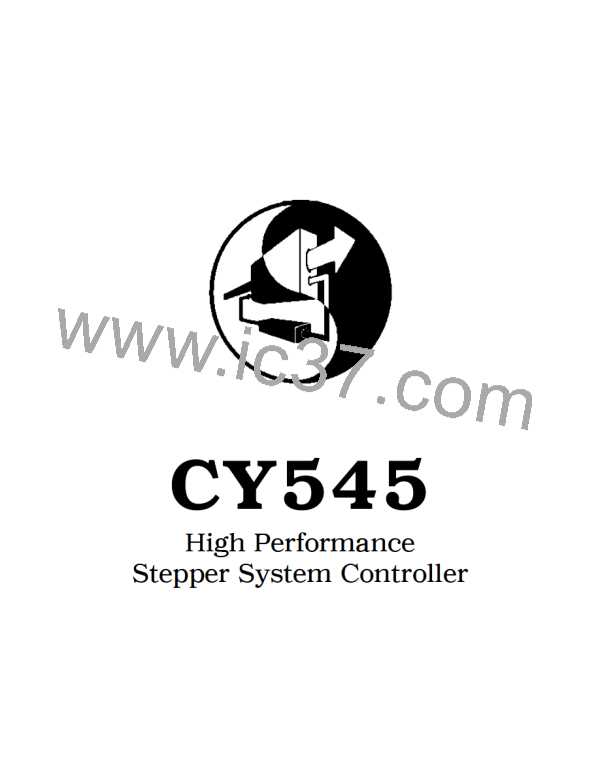CY545 Stepper System Controller
www.ControlChips.com
First, the Mode command could be read from the local memory, if one is present, as part of the
"Auto-Start" routine. This is probably the best approach, since the CY545 will always
reconfigure itself after a reset, without any special action by the host. With this approach, CTS/
can automatically be enabled by the CY545 itself. See the section on External Memory Support
in chapter 12 for more details on the "Auto-Start" function.
If your system does not have the external memory, an alternative approach is to send the Mode
command from your host computer. However, this requires some special software, since the
CTS/ signal is off when the CY545 is reset. The software must send the Mode command with
the CTS monitor function disabled, so that your computer will transmit the command even
though CTS/ is off. It can then reconfigure itself to enable CTS monitoring, after sending the
Mode command. An example BASIC language CRT emulator program which performs this
function is shown in chapter 20 (Getting Up and Running).
The third alternative for starting the CY545, with CTS/ enabled requires some external hardware
plus another User Bit. With this design, the CTS/ signal is always enabled, so the host computer
is not required to reconfigure itself, first sending commands without CTS monitoring, then
switching to CTS monitoring. When the CY545 is reset, both the CTS/ signal (USRB6) and the
second User Bit signal, say USRB5, are high. This forces the CTS/ output from the AND gate to
be low, which is the active state. The host computer can now send the Mode command to
enable the CY545 CTS/ function, then it must send a Bit command to drive the second User Bit
to zero. The logic will now follow the value of the actual CY545 CTS/ signal, until the CY545 is
reset again. For host systems that always require a CTS/ signal, this alternative will work when
there is no local external memory from which to automatically execute the Mode command, The
circuit and command sequence are shown below:
Finally, if MB6 is one, the CY545 uses the lower four bits of the mode byte value to select the
serial baud rate. This allows a parallel command to set the serial rate to a desired value, without
tying the I/O Request and Busy lines to a particular state, and allows a parallel command source
to set up the CY545 for serial communications, such as showing messages on a serial display.
For this function, the CY545 does not store the mode byte value in its internal Mode register, so
if MB6 is set, no other operating modes of the CY545 are affected, only the baud rate selection.
Bits MB0 to MB3 are treated as a binary value, selecting the baud rate as shown in the table
below:
© 2002 Cybernetic Micro Systems
33
Chapter 9 - Operating Mode Command

 ETC [ ETC ]
ETC [ ETC ]